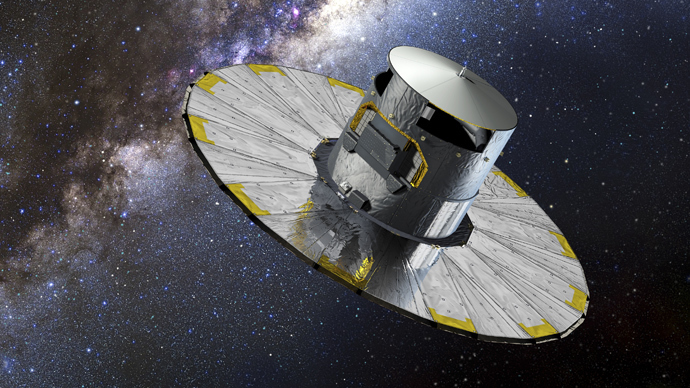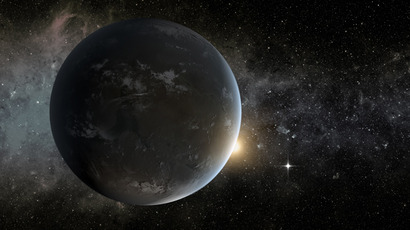World's most powerful satellite telescope 'Gaia' launched to map Milky Way in 3D

Europe has launched a billion dollar state of the art space telescope, that should bring back home the most detailed 3D map of our galaxy.
The five-year-long space voyage of the telescope named Gaia has started from Kourou in French Guiana, where it has taken off on top of a Russian-built Soyuz-Fregat rocket.
The European Space Agency has dubbed the Gaia telescope “the billion star surveyor” which will conduct “the biggest cosmic census yet”. A billion stars might be only one percent of the galaxy; however the previous research mission the Hipparcos catalogued a thousand times less celestial objects between 1989 and 1993.
A #GAIA launch collage! pic.twitter.com/3HEzFbtd9w
— ✨The Solar System✨ (@The_SolarSystem) December 19, 2013
The unprecedented scope of the stars to be surveyed is accompanied by the unprecedented precision with which it’s achieved. The detail will be a thousand times higher than can be done from the ground. The scientific community is holding its breath for a breakthrough.
“For every professional astronomer there’s no need to explain how fundamental Gaia is. Everyone knows that when you get distances to stars it’s the basis for all the rest of the astronomy. Everyone is looking forward to getting this data in their hands,” said Timo Prusti, ESA's Gaia Project Scientist.

During the five years of the space mission each of a billion stars Gaia is tasked with charting will have its position, motion and characteristics observed 70 times. That’s going to be done with the help of the largest digital camera to travel into space. It’s nearly one billion pixels are a hundred times more than your average every day camera.
Sophisticated lenses will allow Gaia to detect celestial objects that are “a million times fainter than the unaided human eye can see”, according to ESA.
Gaia will be able to provide a trove of data.

“If the final catalogue with just the summary of all data accumulated by Gaia was printed and all volumes were nicely aligned in my bookshelf, the row of 53,542 volumes would extend 1.3 km,” says Jos de Bruijne, ESA Gaia Deputy Project Scientist. A more hi-tech comparison says the telescope will bring back 200,000 DVDs worth of data.
Six centers around Europe will be handling the avalanche of information. Big expectations are placed on a supercomputer in Toulouse, south western France, capable of carrying out six thousand billion operations a second.
Gaia will do its research from the so-called Lagrange point or L2. It’s 1.5 million kilometers from earth and allows for observation of space unhampered by the Sun, Earth and Moon.
Apart from creating a 3D map of the Milky Way, Gaia will also shed light on hundreds of thousands of asteroids and comets within our Solar System and seven thousand planets beyond it. It’s also going to study tens of thousands of ‘failed’ stars, called brown dwarfs, as well as twenty thousand emerging, exploding stars, called supernova. Gaia is also expected to provide new tests of Albert Einstein’s relativity theory.














